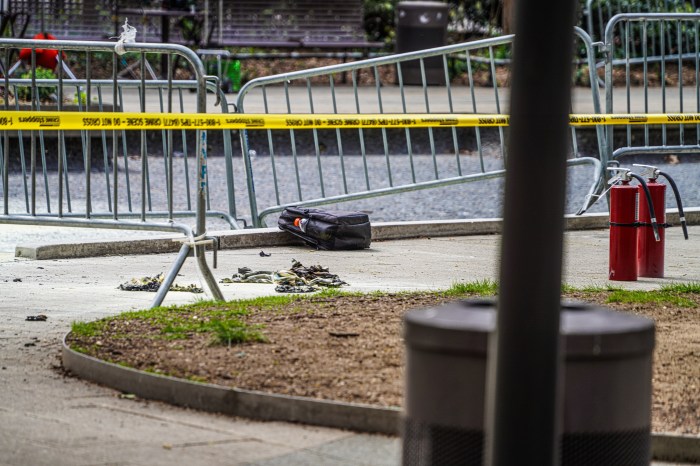By Patricia Demchak
Spanish teacher Marguerita Argueso bears a strong resemblance to Anne Robinson, former host of television’s “The Weakest Link,” as she stands behind a wooden podium in a black pantsuit and gold-rimmed glasses firing questions at her students.
“They will return: future tense,” Argueso demands, then snaps her glance to a student in the corner. Her pen hovers over a marking book, ready to place a check mark for a correct answer and select another name if the first student falters.
“Regres…regresaran,” responds the student.
The drill forms part of the daily routine of Argueso’s class at St. Francis Preparatory school in Fresh Meadows, and resembles exercises practiced in many Spanish classes in high schools throughout the United States — with one important difference: Argueso’s pupils are native Spanish speakers.
Argueso teaches two sections of Spanish for Natives, electives the Catholic prep school created in the 1980s to fill a need for Spanish-language studies among its growing bilingual Hispanic population.
“Since I knew Spanish already, I thought this would give me more of a challenge,” said Laura Ruiz, 15, who was born in the Dominican Republic and came to the United States when she was 4. Like many of Argueso’s students, she grew up speaking Spanish at home, but English is her dominant language.
Ruiz and her fellow students often need to perfect their Spanish reading, writing and vocabulary skills, but thought non-natives Spanish classes were too easy.
“We found that kids that spoke Spanish at home just didn’t fit in with students taking Spanish 1, 2 and 3,” said Wolfgang Hiller, chairman of modern foreign languages at St. Francis. “It was too slow for them, so they would become edgy and bored.”
Now 61 students are enrolled in the two consecutive, accelerated Spanish courses, with a separate textbook and emphasis on literacy and writing. Few complain of boredom.
“The class is a challenge, and to pass you have to work very hard,” wrote Melissa Sarmiento in her evaluation of the course, which she also said was “fun.” Many of Argueso’s students mentioned both their struggles and enjoyment of the class.
“I like the course, although I am having trouble with it,” wrote one student. “It challenges me and makes me learn my native language. I’ve spoken it in my home most of my life, but I’ve never been taught to read or write it.”
Hiller said the school’s growing number of Spanish speakers reflects a decade-long expansion in Queen’s Hispanic population, which increased by more than 175,000 people between 1990 and 2000. The school’s student body is 15 percent Hispanic and 61.6 percent white.
“We are a reflection of all Queens,” Hiller said. “Our students are not just from Fresh Meadows, but from as far away as Long Island City, Astoria, Jackson Heights — even Brooklyn.”
“In one class I have students of 12 different nationalities,” Argueso marveled, noting that the students enjoy exploring the different Spanish colloquialisms of their native countries. Her classes combine both foreign-born and U.S. natives raised by Hispanic parents.
“Basically the general native student is a child born here and born to a family whose customs and traditions are Spanish, but they’re forced to adapt to the American culture,” Argueso said. She added that sometimes siblings raised in the United States reject their parents’ language and choose to speak English among themselves, which can frustrate parents.
Many such children are now returning as young adults to reclaim the language of their roots.
At least two other private high schools in New York City offer Spanish for Natives classes. Although no public high schools have a similar course, many Spanish speakers do choose to enroll in regular Spanish classes, said Kevin Ortiz, a spokesman for the city Board of Education.
In addition, colleges and cultural centers report a steady flow of Hispanics enrolling in Spanish language courses.
“This is a phenomenon that has been on the rise for a long time,” said Edward Strug, undergraduate adviser at Queens College’s Department of Hispanic Language and Literature. He estimated between 80 and 90 percent of students in advanced Spanish courses come from some sort of Spanish-speaking background.
“People want to know their own culture,” Strug said. “They speak at home, but they’re removed from the cultural scene in which the language flourishes.”
Argueso said her ultimate goal in teaching students their language, literature and culture extends beyond academic achievement.
“If anything, I want them to leave the class feeling special, feeling pride in their heritage and traditions, no matter where they’re from,” Argueso said.
Reach reporter Patricia Demchak by e-mail at Timesledgr@aol.com or call 229-0300, Ext. 155.































